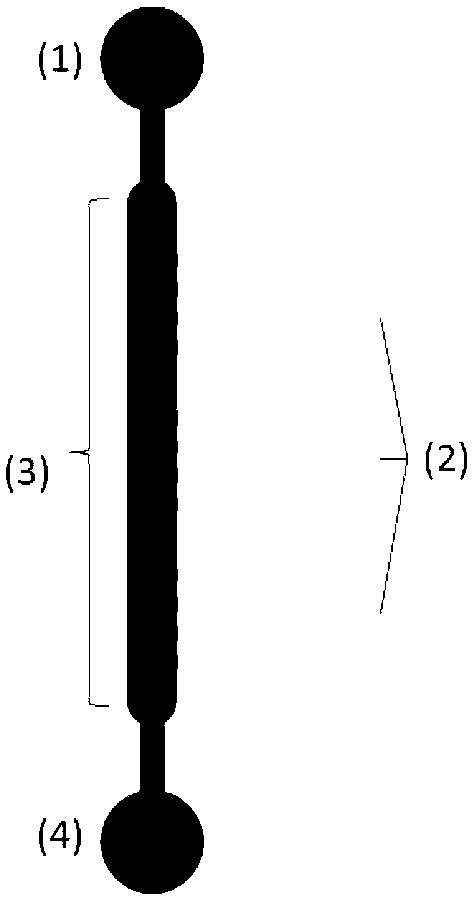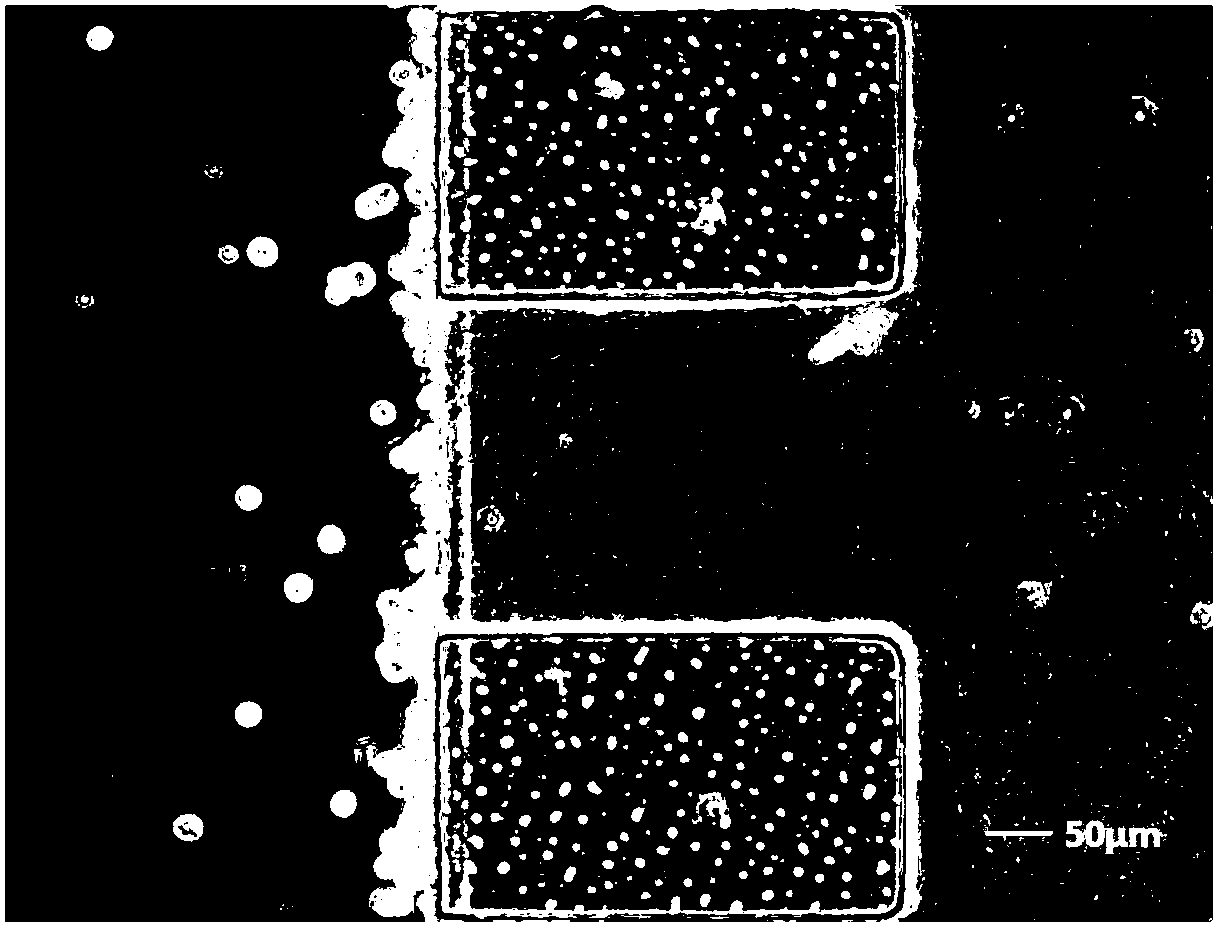Establishment and characterization method of in-vitro blood brain barrier model based on microfluidic chip
A microfluidic chip and blood-brain barrier technology, applied in biochemical equipment and methods, artificial cell constructs, tissue cell/virus culture devices, etc., can solve difficult blood-brain barrier models and difficult to achieve mesenchymal stem cells In-situ observation and other issues to achieve the effect of reducing consumption
- Summary
- Abstract
- Description
- Claims
- Application Information
AI Technical Summary
Problems solved by technology
Method used
Image
Examples
Embodiment 1
[0032] HUVEC cells tightly fused on a three-dimensional collagen surface to form the blood-brain barrier and its structural characterization
[0033] Using the microfluidic chip designed and manufactured by the laboratory, the configuration is as follows: figure 1 shown. Prepare a collagen stock solution with a concentration of 3 mg / mL, add 0.4 μL per well into the collagen inlet pool, gel at 37 °C for 30 min, and the distribution of the formed glue filaments is as follows: figure 2 shown. Add 10-20 μL of HUVEC cell suspension from the cell inlet pool, and the concentration of the cell suspension is 5×10 6 -1×10 7 cells / mL, the chip was erected for 10 minutes to make the cells attach to the collagen side, such as image 3 As shown, take pictures to record the initial position of the cells. Change the medium every 24h, and take pictures to record the fusion of HUVEC cells, such as Figure 4 shown. After 48 hours, cell immunofluorescence staining was carried out, and the...
Embodiment 2
[0035] Characterization of Blood Brain Barrier Permeability Using Small Molecule Fluorescent Substances
[0036] Using the microfluidic chip designed and manufactured by the laboratory, the configuration is as follows: figure 1shown. After the 3 mg / mL collagen was perfused into the chip and coagulated, the blood-brain barrier model was established using the same cell inoculation and culture methods as in Example 1. 48 hours after HUVEC cells were inoculated into the chip, 10μLCellTracker Green was added to the chip with a concentration of 10μmol / L and a molecular weight of 557.47D. From 0min, the fluorescence intensity on the side of the three-dimensional collagen was recorded every 15min, and statistical calculation was performed to characterize the permeability of the blood-brain barrier. The result is as Figure 6 shown.
PUM
 Login to View More
Login to View More Abstract
Description
Claims
Application Information
 Login to View More
Login to View More - R&D
- Intellectual Property
- Life Sciences
- Materials
- Tech Scout
- Unparalleled Data Quality
- Higher Quality Content
- 60% Fewer Hallucinations
Browse by: Latest US Patents, China's latest patents, Technical Efficacy Thesaurus, Application Domain, Technology Topic, Popular Technical Reports.
© 2025 PatSnap. All rights reserved.Legal|Privacy policy|Modern Slavery Act Transparency Statement|Sitemap|About US| Contact US: help@patsnap.com



